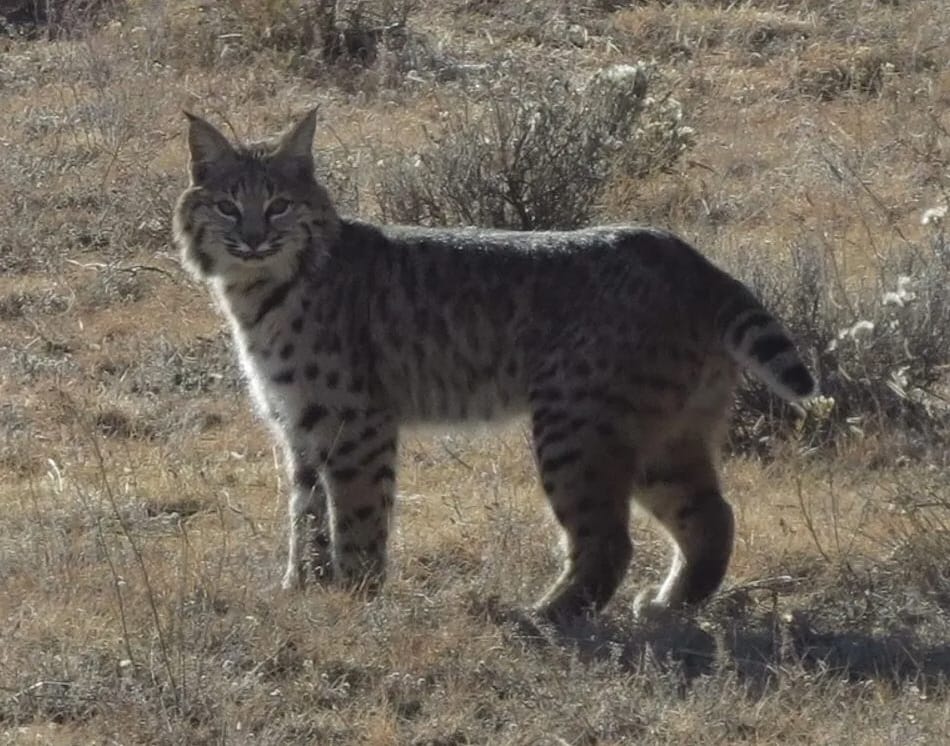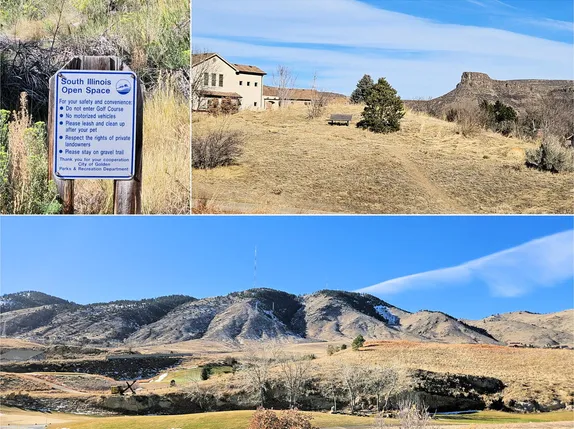This is the first in a series of articles describing wildlife native to the Golden area. The Stewards of Golden Open Space have offered to share their knowledge of the local residents.
By Ann Norton - Stewards of Golden Open Space
If you live next to, near or visit Golden’s open spaces, you may have been lucky enough to see some of our most elusive and shy neighbors, bobcats. This summer and fall they seem to be particularly evident, which led me to learn more about them. They are mammals with the scientific species name of Lynx rufus. Sometimes they are confused with and hard to distinguish from their even more elusive, secretive and larger cousins, the lynx, which are generally not found in or near Golden, but rather at higher, colder altitudes. Bobcats, the most common wild cat species, live across our state.
Typically, between 32-37 inches long with short, approximately 6-inch bobbed tails, - hence the name, bobcat - our residents have buff to brown fur, sometimes with a reddish tinge, with brown and black stripes and spots and have facial ruffs and ear tufts. The ears are black-tipped and pointed, with short black tufts, and the lips, chin and undersides are off-white in color. The tail has a black spot on the tip and white underneath and the forelegs have distinctive black stripes. As evident from the picture, they are extremely well camouflaged in their regular habitats. They have excellent hearing and vision. You will likely not see our bobcats on open prairie/grassy areas as their favored habitat include foothills, canyons, mesas and plateau with brush and woodlands. You may see them in winter as they don’t hibernate.
Bobcats have retractable claws which do not show up in tracks which are round with 4 toes and about 1.5-2.5 inches across. The claws are extended as the bobcat climbs a tree, catches prey, or defends itself.

Bobcats are carnivores, especially favoring rabbits. But not being too picky they will also eat small mammals, including rodents, as well as snakes, insects, and sometimes even birds. They typically hunt using the same routes within their territories, which for males are larger than for females.
These beautiful animals are usually silent but produce sounds during mating, like a howling house cat, and maybe deep growls, hisses, and spitting noises when they perceive a threat to their safety or territory.
Except during breeding, adult bobcats are solitary, and primarily use scent and visual signals (claw or body marks on trees or the ground) to mark their territory and communicate. According to one biological resource, “Bobcats have a sophisticated form of land tenure and usually respect each other’s territory.” However, there have been reported instances of temporary mixing of juveniles and adults, including the father in the general area of the new litter, and mixing of litters. Although they can be active during the day, most activity occurs at dawn and dusk, thus they are referred to as “Crepuscular”.
Bobcats breed in late winter and spring producing only a single litter each year typically of two to three young, after a gestation period of about 10 weeks. Neither males nor females are monogamous when it comes to mating. The female provides all the care of the young and does not tolerate the male’s presence after birth (or generally before). The nursery is a simple natural shelter – under a rock or log or in a cave that the female may line with moss and foliage. The young are nursed until they are weaned at about 8 -10 weeks of age. The kittens may travel with the mother for a few months before separating for the winter. Although females are sexually mature after one year they usually don’t mate until closer to two years of age. Males take nearly 2 years to mature. Bobcats den in places protected from the weather, which can range from hollow trees and caves to spaces under dense shrubs or between boulders.
They are stealth hunters, but they can run at speeds topping 30 miles per hour, leap at least 8 feet and are excellent climbers, including of trees, which they can seek for protection, rest, and to pursue prey. When running and hunting, they place their back feet in the same spots where their front feet have stepped to reduce noise.
According to the Colorado Department of Parks and Wildlife (CPW) “Healthy and robust bobcat populations, which Colorado’s current management is designed to maintain, are important to functioning ecosystems.” Although not currently biologically threatened the biggest threat bobcats face is the loss of their habitat, which is a growing concern everywhere including here.
In Colorado, CPW biologists assess five different metrics each year to make sure bobcat populations are healthy, which they currently are. Hopefully we are all thankful for the privilege of sharing this land with these beautiful, interesting creatures and will do what we can to ensure this continues.
Resources:
https://cpw.state.co.us/species/bobcat
https://savethehuntcolorado.com/wp-content/uploads/2024/02/Bobcat-Lion-Lynx-Management-FAQ.pdf https://www.summitdaily.com/news/summit-outside-the-bobcat-one-tough-critter/ https://ielc.libguides.com/sdzg/factsheets/bobcat/summary https://nationalzoo.si.edu/animals/bobcat





